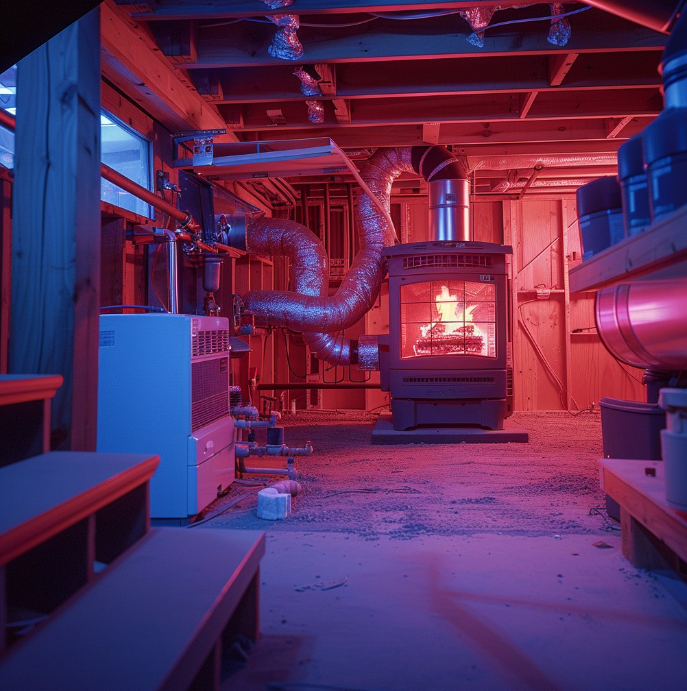What is the Cheapest Heating System to Install?
When it comes to keeping your home warm during the colder months, finding the most cost-effective solution is crucial. Not only do you want a system that is affordable to install, but you also need one that won’t break the bank when it comes to ongoing energy costs. In this article, we’ll explore various heating options and determine which is the cheapest heating system to install while promoting sustainable energy choices like those offered by ChariotEnergy.com.
Understanding Heating System Costs
Initial Installation vs. Long-Term Costs
When evaluating heating systems, it’s important to differentiate between initial installation costs and long-term operating costs. The cheapest system to install might not always be the most economical in the long run. However, if you’re on a tight budget, the upfront costs could be the deciding factor.
Common Types of Heating Systems
Before we dive into the costs, let’s briefly outline the most common heating systems:
- Electric Baseboard Heaters
- Furnaces (Natural Gas, Electric, Oil)
- Heat Pumps
- Boilers
- Radiant Floor Heating
- Wood Stoves
Each system has its own set of pros and cons, but we’ll focus on the initial installation costs to determine the cheapest heating system.
The Cheapest Heating System to Install
1. Electric Baseboard Heaters
Electric baseboard heaters are one of the most straightforward and least expensive systems to install. They don’t require ductwork, which significantly reduces the installation cost. These units are wall-mounted and connected directly to the home’s electrical system.
- Installation Cost: Typically ranges from $300 to $1,000 per unit.
- Pros: Low installation cost, easy to install in individual rooms.
- Cons: Higher operating costs due to electricity rates, less energy-efficient.
2. Natural Gas Furnaces
While natural gas furnaces can be costlier than electric baseboard heaters to install, they are still relatively affordable, especially in areas where natural gas is readily available.
- Installation Cost: Ranges from $2,500 to $5,500.
- Pros: Lower operating costs compared to electric heating systems, widely available.
- Cons: Requires ductwork, more expensive installation.
3. Heat Pumps
Heat pumps are versatile as they provide both heating and cooling. They are relatively cost-effective, especially in moderate climates where extreme cold is not a concern.
- Installation Cost: Typically ranges from $3,000 to $7,500.
- Pros: Energy-efficient, provides both heating and cooling, lower operating costs.
- Cons: Higher upfront cost, less efficient in extremely cold climates.
4. Wood Stoves
For those in rural areas with access to inexpensive or free wood, wood stoves can be a low-cost option for both installation and operation.
- Installation Cost: Ranges from $1,000 to $3,000.
- Pros: Inexpensive fuel, independent of the power grid.
- Cons: Requires manual operation, higher maintenance, not suitable for all homes.
Comparing Costs: Data Example
To illustrate, here’s a quick comparison of the installation costs:
| Heating System | Estimated Installation Cost |
| Electric Baseboard Heaters | $300 – $1,000 |
| Natural Gas Furnace | $2,500 – $5,500 |
| Heat Pump | $3,000 – $7,500 |
| Wood Stove | $1,000 – $3,000 |
As you can see, electric baseboard heaters emerge as the cheapest heating system to install, making them a popular choice for those prioritizing upfront costs.
Why Consider Energy Efficiency?
While installation costs are a significant factor, energy efficiency should also be considered. A system that costs more to install but saves on energy bills over time could be more cost-effective in the long run. For those interested in sustainable and affordable energy solutions, Chariot Energy offers competitive rates and green energy options to help you reduce your carbon footprint without sacrificing comfort.
Conclusion
When it comes to the cheapest heating system to install, electric baseboard heaters take the lead due to their low upfront costs and ease of installation. However, it’s essential to weigh these savings against the higher operating costs associated with electric heating. For a balanced approach, consider both installation and operational costs, and explore energy-efficient options offered by providers like ChariotEnergy.com.
By understanding your specific heating needs and budget, you can choose the most cost-effective system for your home, ensuring warmth and comfort throughout the colder months without overspending.
Sources:
- Energy.gov – Heating Systems
- This Old House – Heating Systems
- Chariot Energy – Affordable Energy Solutions

